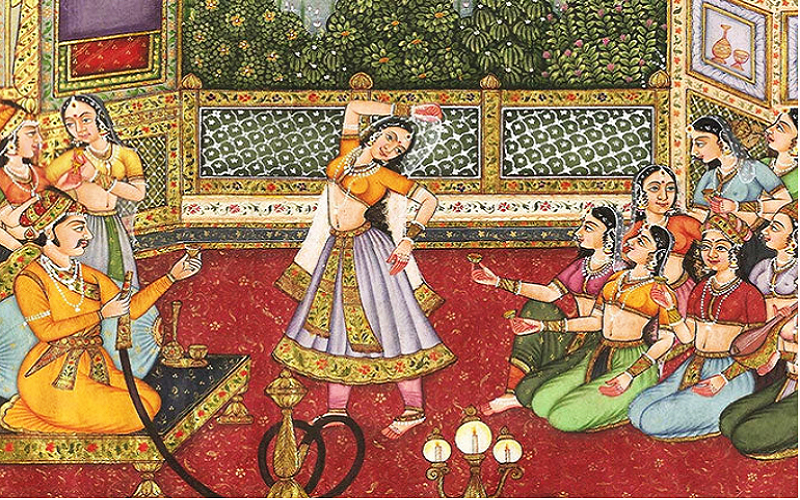Art has always been a powerful tool for storytelling, especially when it comes to preserving cultural heritage. Across the world, handmade paintings have served as visual representations of cultural identities, traditions, and histories. These pieces of handmade artwork offer windows into the lives, beliefs, and values of different communities, connecting the present with the past.
In this article, we’ll explore how handmade paintings from various cultures reflect and preserve heritage, acting as bridges between generations. We’ll also look at the unique techniques, symbols, and themes that artists from diverse backgrounds use to celebrate their roots and express their cultural identities.
The Role of Handmade Paintings in Cultural Preservation
Cultural heritage encompasses the customs, practices, languages, artifacts, and knowledge passed down through generations. It’s an intrinsic part of what makes communities unique, shaping their identities over time. Handmade artwork, particularly paintings, plays an essential role in documenting and preserving this heritage.
Unlike digital art or mass-produced prints, handmade paintings carry a personal touch that speaks to the artist’s connection with their culture. Every brushstroke, color choice, and subject matter is steeped in meaning, often drawn from traditions that go back centuries. These artworks become living records, safeguarding cultural stories for future generations.
In many cases, handmade paintings are used in rituals, ceremonies, and festivals, embodying a community’s history and values. Whether it’s through depicting religious icons, folk tales, or historical events, these paintings act as timeless expressions of cultural pride.
Handmade Paintings Around the World: A Cultural Overview
1. India: The Timeless Beauty of Madhubani and Pattachitra Art
India’s rich artistic heritage is reflected in its diverse forms of handmade paintings, each rooted in the country’s varied cultural and religious traditions. Among the most celebrated is Madhubani painting, a style that originates from the Mithila region of Bihar. Madhubani paintings are known for their intricate designs, often featuring gods, goddesses, and nature motifs. Traditionally created by women, these paintings are made using natural dyes and pigments, with scenes often drawn from Hindu epics like the Ramayana and Mahabharata.
Another significant Indian art form is Pattachitra, originating from the state of Odisha. Pattachitra paintings are distinguished by their vibrant colors and mythological themes, depicting scenes from the life of Lord Krishna and other Hindu deities. Both Madhubani and Pattachitra art forms are deeply tied to cultural heritage, passed down through generations, and serve as a visual documentation of religious and mythological stories that are integral to Indian identity.
2. Africa: The Symbolism of Ndebele and Ethiopian Art
In Africa, handmade paintings play a crucial role in both social and spiritual life. Among the Ndebele people of southern Africa, wall paintings are more than just decorative art; they are part of a long-standing tradition used to convey social and cultural messages. Ndebele art is known for its geometric patterns and vibrant colors, which are used to decorate the exteriors of homes. Historically, these paintings were created by women and were closely associated with rites of passage, marking significant moments in a family’s life, such as weddings or the birth of a child.
Ethiopian religious paintings, on the other hand, often focus on Christianity, which has been deeply embedded in the culture for centuries. Handmade paintings in Ethiopia often depict biblical scenes, saints, and angels, with a unique style that combines flat, frontal figures with bold, contrasting colors. These paintings are commonly found in churches and monasteries, serving both devotional and educational purposes, teaching the faithful about their religious heritage.
3. Japan: The Elegance of Nihonga and Ukiyo-e
Japanese handmade artwork has long been revered for its elegance and subtlety, with traditions that span centuries. Nihonga, a traditional Japanese painting style, uses natural materials like mineral pigments, gold leaf, and ink to create serene and spiritual images. Nihonga paintings often depict nature scenes, such as cherry blossoms, mountains, and birds, and are meant to evoke a sense of harmony and peace. The style developed during the Meiji period, and many Nihonga artists sought to preserve traditional Japanese techniques in the face of growing Western influence.
Another iconic Japanese art form is Ukiyo-e, which means “pictures of the floating world.” Ukiyo-e woodblock prints became popular during the Edo period and often featured scenes of everyday life, landscapes, and famous kabuki actors. While Ukiyo-e is best known for its printmaking, it also influenced handmade painting, with artists creating detailed, colorful depictions of Japanese cultural life, such as festivals, tea ceremonies, and geishas. These works remain vital to understanding Japan’s cultural history.
4. Mexico: The Colorful Traditions of Oaxacan and Huichol Art
In Mexico, handmade paintings reflect a vibrant blend of indigenous and Spanish colonial influences. In the state of Oaxaca, indigenous Zapotec and Mixtec artists have created intricate handmade artwork for centuries, known for its bold use of color and detailed depictions of folk tales, gods, and animals. Oaxacan art is particularly known for its Alebrijes—fantastical creatures painted in vivid colors that represent spiritual guides in indigenous traditions.
The Huichol people of Mexico are also renowned for their stunning handmade art, including paintings made from tiny beads and yarn, called Nierikas. These pieces are deeply spiritual, often representing visions experienced by Huichol shamans during religious ceremonies. Huichol art uses symbols like deer, snakes, and maize, which are sacred in their culture, and each painting tells a story of the community’s relationship with the natural and spiritual worlds.
5. Europe: The Legacy of Iconography in Eastern Orthodox Christianity
In Eastern Europe, handmade icon paintings have played a significant role in both religious worship and cultural preservation. Iconography, especially in countries like Russia, Greece, and Serbia, is a deeply revered art form that involves painting sacred figures, such as Christ, the Virgin Mary, and saints, using traditional techniques that have been passed down for centuries. Icons are considered more than just religious paintings; they are seen as holy objects that connect the earthly and divine worlds.
The process of creating an icon is as much a spiritual journey for the artist as it is a physical task. Artists use natural materials such as egg tempera and gold leaf, and the creation process involves prayers and meditations. These works of art are not only devotional objects but also cultural treasures, preserving the beliefs and traditions of Orthodox Christianity.
The Universal Language of Handmade Paintings
Despite the cultural differences in style, technique, and symbolism, handmade paintings share a common purpose across the world: they serve as a medium for storytelling and cultural preservation. Whether depicting religious icons, mythological tales, or everyday life, handmade artwork speaks to the core of human experience, transcending time and geography.
In many ways, handmade paintings act as a universal language, offering viewers insight into a culture’s values, struggles, and triumphs. By studying handmade artwork from different cultures, we can learn not only about the people who created it but also about our shared human heritage.
The Modern Revival of Handmade Paintings
In today’s digital age, where mass-produced art and technology dominate, there has been a resurgence of interest in handmade paintings that honor cultural heritage. Many contemporary artists are revisiting traditional techniques, infusing them with modern perspectives to create artworks that bridge the past and present.
Art collectors and enthusiasts are increasingly drawn to handmade artwork for its authenticity and the personal connection it fosters between the artist, the subject, and the viewer. As more people seek to explore their own cultural roots or appreciate the heritage of others, handmade paintings continue to serve as an important medium for understanding and celebrating the diversity of global cultures.
Conclusion: Handmade Paintings as Cultural Ambassadors
Handmade paintings are far more than decorative objects; they are cultural ambassadors that carry the weight of history, tradition, and identity. Whether they come from a small village in Africa or a bustling city in Japan, each handmade painting reflects the cultural heritage of its people, providing a lasting testament to the traditions that have shaped societies for centuries.
As we look to the future, the role of handmade paintings in preserving cultural heritage remains as vital as ever. These artworks remind us that while the world may be constantly changing, the stories, values, and customs that define us are timeless. Through the art of handmade painting, we can continue to explore and celebrate the rich tapestry of human culture from a global perspective.



